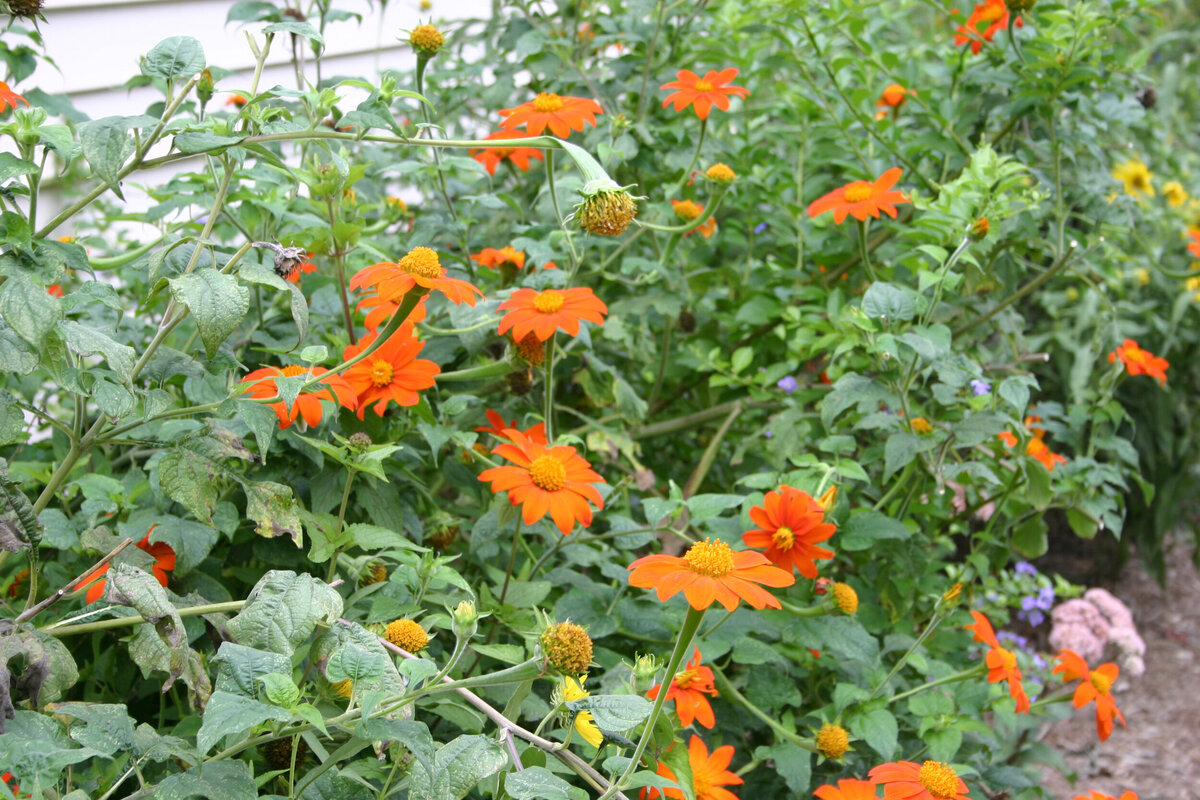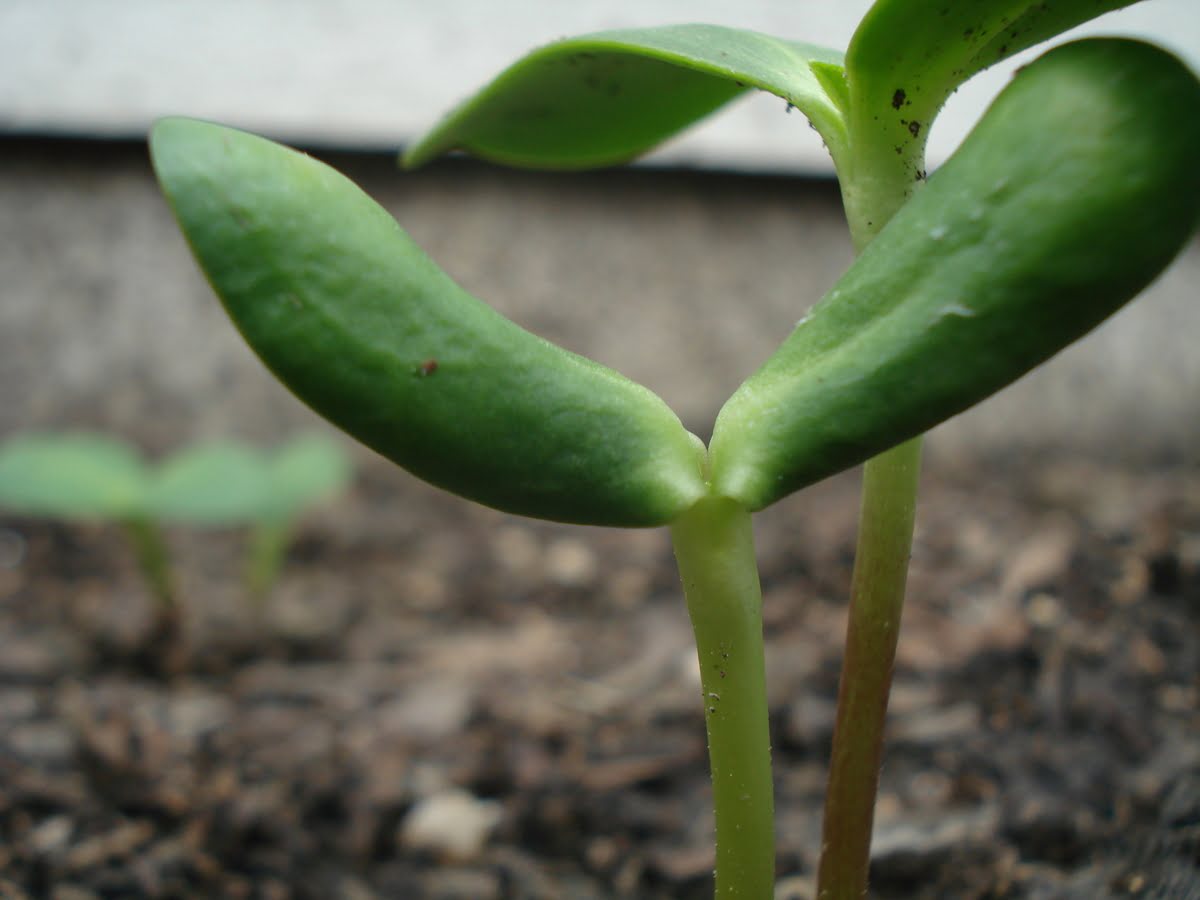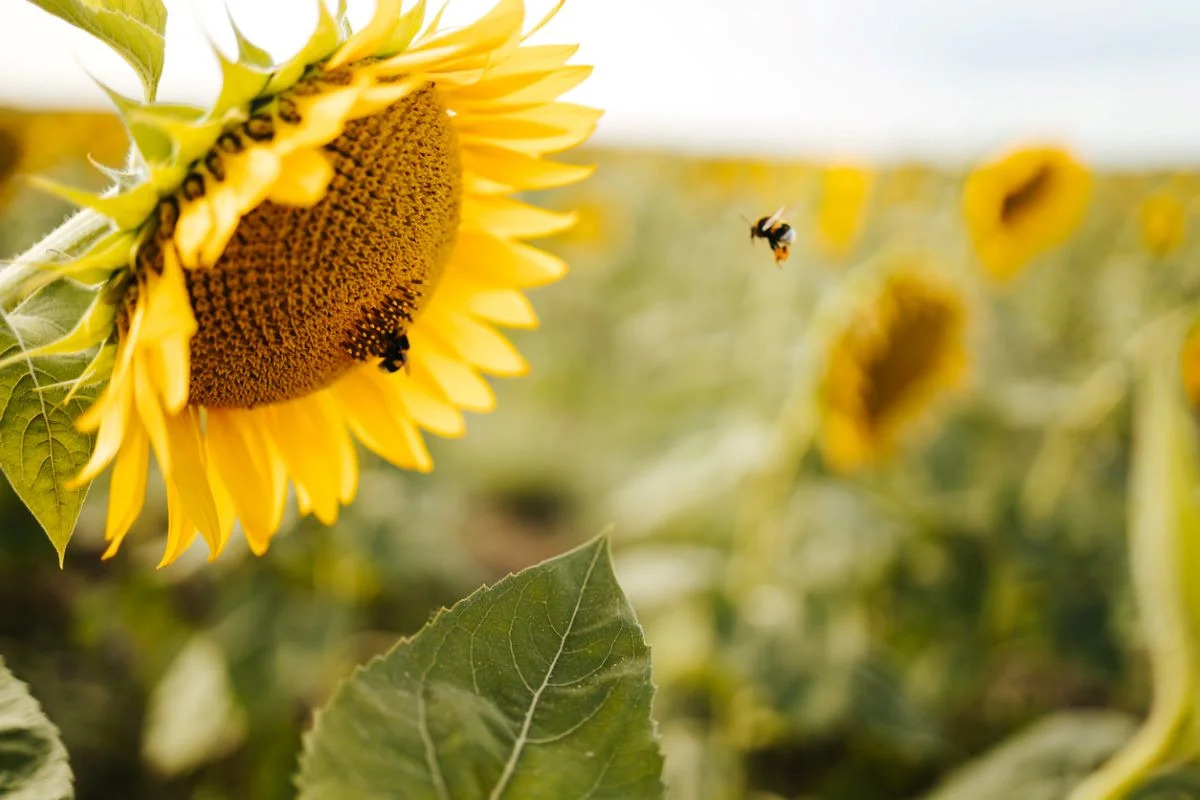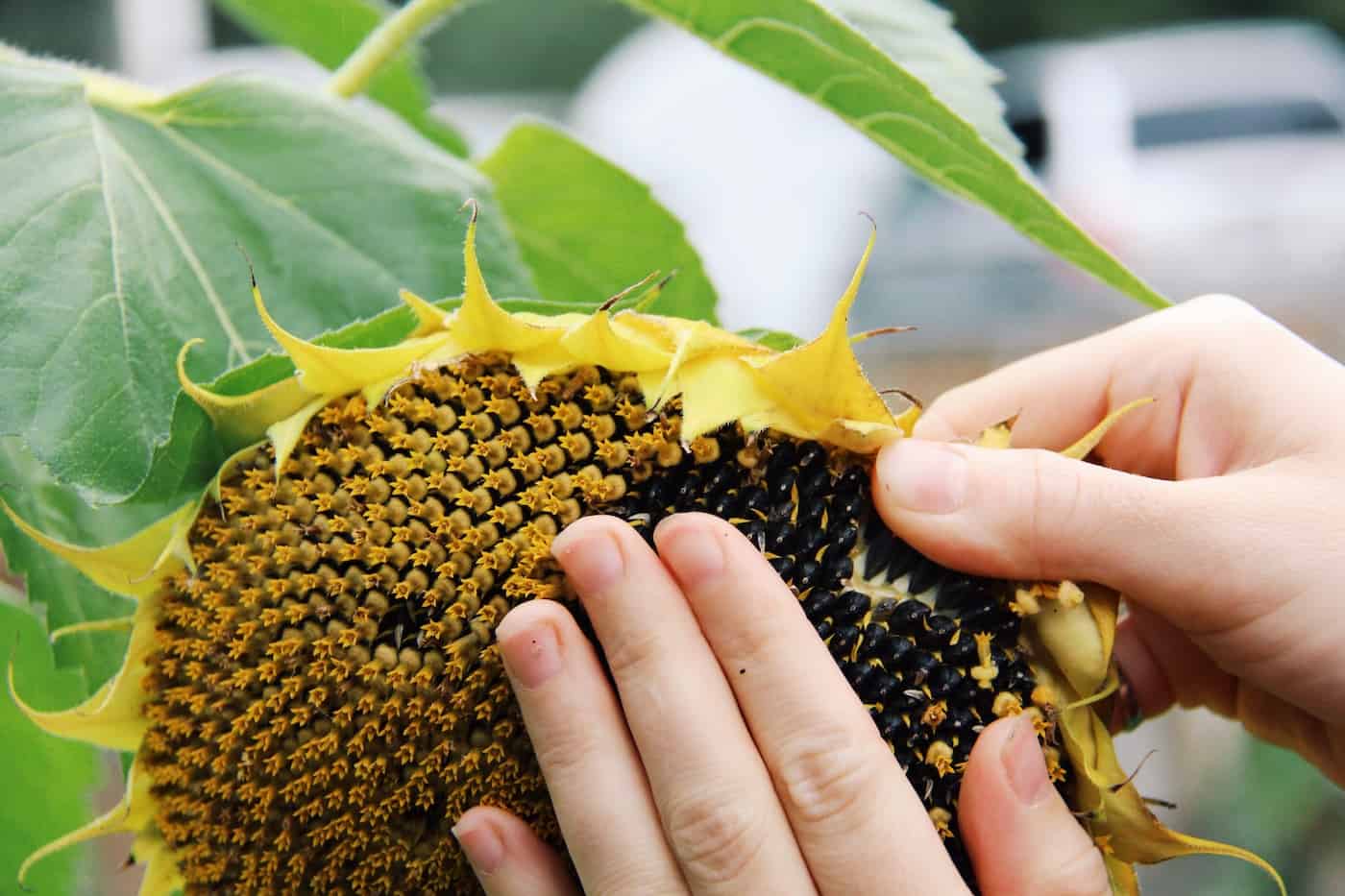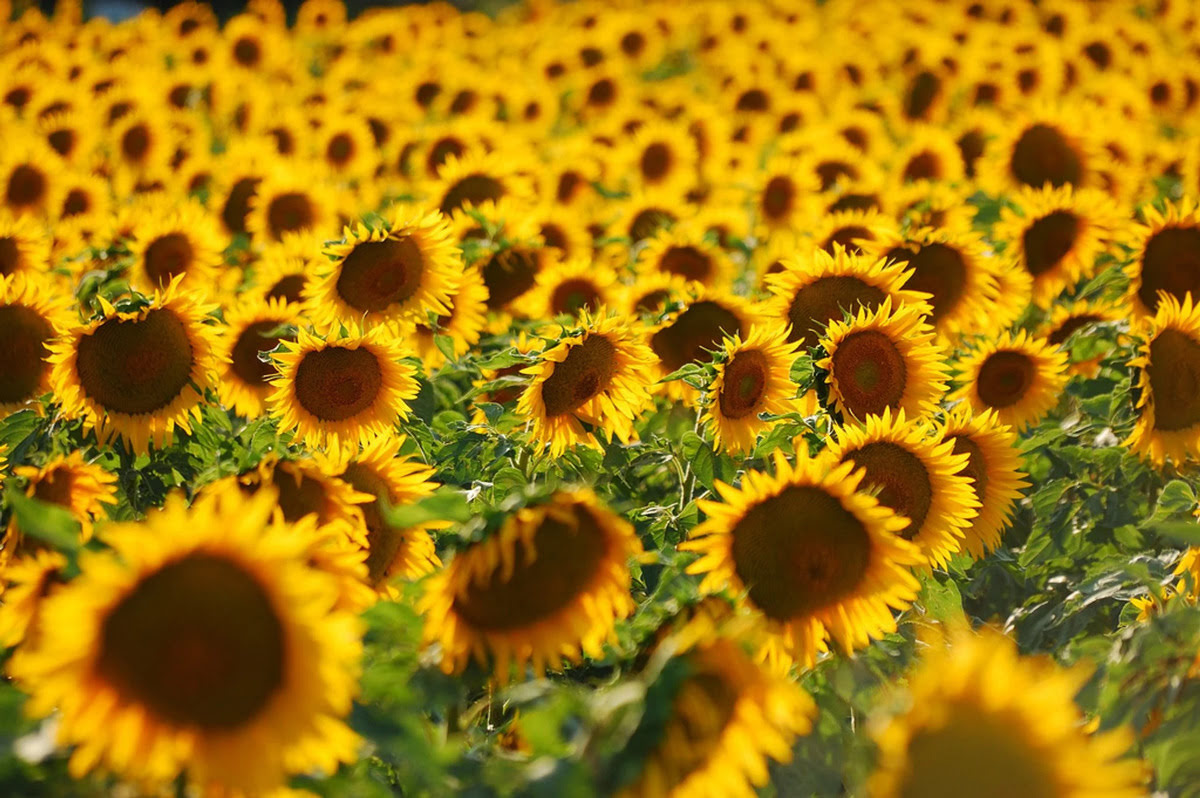Home>Gardening Techniques>Plant Care>What Do You Do When Sunflowers Die
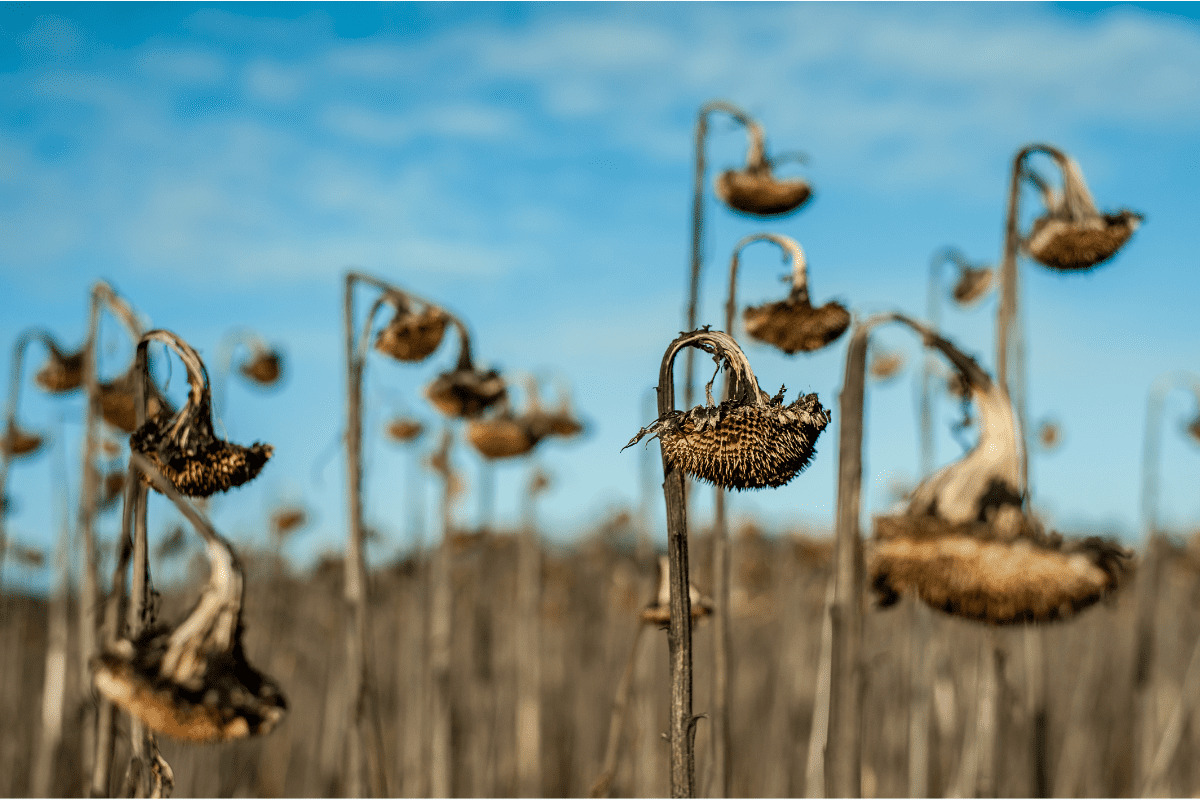

Plant Care
What Do You Do When Sunflowers Die
Modified: January 22, 2024
Discover effective plant care tips for sunflowers to prevent them from dying. Learn how to nourish and maintain your sunflower plants for long-lasting beauty and health.
(Many of the links in this article redirect to a specific reviewed product. Your purchase of these products through affiliate links helps to generate commission for Chicagolandgardening.com, at no extra cost. Learn more)
Table of Contents
Introduction
Sunflowers are vibrant and beautiful plants that bring joy and color to any garden or landscape. Whether you grow them for aesthetic reasons or as a source of seeds, it’s disheartening to see them wilt and eventually die. Understanding the reasons behind the death of sunflowers can help you prevent it from happening and ensure the longevity of these magnificent plants.
Sunflowers (Scientific name: Helianthus annuus) are native to North America and are known for their towering height and large, bright yellow petals. They are annual plants that require proper care and attention to thrive. However, even with the best care, sunflowers can still succumb to various factors that contribute to their demise.
In this article, we will explore the possible reasons for sunflower death, including diseases, pests, and environmental factors. We will also discuss how to identify the cause of a sunflower’s death and provide preventive measures to ensure the health and longevity of these plants. By understanding and implementing these strategies, you can enjoy the beauty of healthy sunflowers throughout their growing season.
Reasons for Sunflowers Dying
Sunflowers can die for a variety of reasons, ranging from disease infections to pest infestations. Understanding the potential causes of sunflower death is crucial in addressing the issue and implementing appropriate measures to prevent it from happening again. Let’s explore some common reasons why sunflowers may die:
- Poor Soil Quality: Sunflowers thrive in well-draining soil that is rich in organic matter. If the soil lacks nutrients or has poor drainage, it can lead to stunted growth and eventual death of the plant.
- Overwatering or Underwatering: Improper watering practices can adversely affect sunflower health. Overwatering can lead to root rot and suffocation, while underwatering can cause dehydration and nutrient imbalance.
- Fungal Infections: Sunflowers are susceptible to various fungal infections, such as powdery mildew and botrytis blight. These diseases can result in wilting, yellowing foliage, and eventually, the death of the plant.
- Viral Infections: Some viruses can attack sunflowers, leading to stunted growth, distorted leaves, and ultimately, plant death. Common viral infections in sunflowers include the sunflower necrosis virus and the sunflower mottle virus.
- Pest Infestations: Sunflowers can fall victim to various pests, including aphids, caterpillars, and beetles. These insects feed on the plant’s foliage, weaken its overall structure, and spread diseases, leading to the sunflower’s demise.
- Elevated Temperatures: Sunflowers are sun-loving plants, but excessive heat can spell trouble for them. Prolonged exposure to high temperatures can cause wilting, sunburn, and damage to the plant’s reproductive organs, leading to its death.
- Extreme Weather Conditions: Sunflowers may struggle to survive in harsh weather conditions such as heavy rains, strong winds, or frost. These extreme weather events can damage the plant’s stems, petals, and overall structure, eventually leading to its death.
These are just some of the reasons why sunflowers may die. Identifying the specific cause of death in your sunflowers will allow you to take appropriate steps to address the issue and prevent future occurrences. In the following sections, we will explore how to identify the cause of sunflower death and implement preventive measures to ensure healthy and thriving sunflowers in your garden.
Identifying the Cause of Sunflower Death
When a sunflower starts to show signs of distress and ultimately dies, it’s essential to identify the specific cause to effectively address the issue. Here are some steps to help you identify the underlying cause of your sunflower’s demise:
- Observe the Symptoms: Carefully examine the sunflower plant and take note of any visible symptoms. Look for wilting, yellowing leaves, spots or lesions, pest infestations, or any other abnormal signs.
- Inspect the Soil: Check the soil moisture level and drainage. If the soil is waterlogged or overly dry, improper watering could be a potential cause of death.
- Assess Environmental Conditions: Consider factors such as temperature, sunlight exposure, and extreme weather events that the sunflower plant experienced. Evaluate whether the plant received adequate sunlight or was exposed to extreme temperatures.
- Examine the Roots: Gently remove the sunflower plant from the soil and examine its roots. Healthy roots should appear firm and white, while roots that are dark, mushy, or have a foul odor may indicate root rot or overwatering issues.
- Check for Pests: Look for signs of pest infestation, such as visible insects, chewed leaves, or eggs on the plant. Common pests that affect sunflowers include aphids, caterpillars, and beetles.
- Consider Disease Symptoms: If you notice discoloration, spots, or lesions on the leaves or stems, it could be an indication of a fungal or viral infection. Research common sunflower diseases and compare the symptoms to determine if disease is the cause.
By systematically assessing these factors and conducting a careful examination of your sunflower plant, you can narrow down the possible cause of death. Identifying the specific issue will help you implement targeted solutions and prevent similar problems in the future. In the next sections, we will discuss common diseases and pests that affect sunflowers, as well as the environmental factors that can contribute to their death.
Common Diseases Affecting Sunflowers
Sunflowers, like any other plant, are susceptible to various diseases that can weaken and eventually kill them if left untreated. Understanding the common diseases that affect sunflowers can help you take preventive measures and address the issue promptly to save your plants. Here are some of the most common diseases that can impact sunflowers:
- Powdery Mildew: Powdery mildew is a fungal disease characterized by a powdery white or grayish coating on the leaves and stems of plants. It thrives in moist and humid environments. Infected sunflowers may experience stunted growth, distorted leaves, and reduced flower production.
- Downy Mildew: Downy mildew is another fungal disease that affects sunflowers. It appears as yellow or brown patches on the leaves, often accompanied by a white or grayish mold-like growth on the undersides of the leaves. Downy mildew can cause leaf wilting, premature leaf drop, and overall plant decline.
- Rust: Rust is a fungal disease that manifests as reddish-brown or orange pustules on the leaves, stems, and sometimes the flower heads of sunflowers. As the disease progresses, the infected areas may become necrotic, causing severe damage and reduced plant vigor.
- Verticillium Wilt: Verticillium wilt is a soil-borne fungal disease that affects a wide range of plants, including sunflowers. It causes wilting, yellowing, and browning of the leaves in affected plants. The fungus gradually invades the plant’s vascular system, disrupting water and nutrient transport, leading to plant death.
- Phoma Black Stem: Phoma black stem is a fungal disease that causes dark, sunken lesions on the stem of sunflowers. Infected plants may experience stem discoloration, wilting, and eventually, dieback of the entire plant.
- Mosaic Viruses: Mosaic viruses can infect sunflowers and cause mosaic-like patterns of light and dark patches on the leaves. These viruses can stunt plant growth, reduce flower production, and ultimately lead to plant death.
It’s important to note that prevention is key when it comes to managing diseases in sunflowers. Maintaining good sanitation practices, such as removing and disposing of infected plant material, practicing crop rotation, and ensuring proper air circulation can help prevent the spread and recurrence of these diseases. Additionally, selecting disease-resistant sunflower varieties and providing optimal growing conditions can reduce the risk of infection.
When dealing with a disease outbreak, it’s advisable to consult with a local horticultural extension or plant health professional to accurately identify the disease and seek appropriate treatment options. Early detection and intervention can greatly increase the chances of saving infected sunflowers.
Pests That Can Harm Sunflowers
While sunflowers are resilient plants, they are not immune to attacks from various pests. These pests can cause significant damage to sunflowers, leading to reduced growth, loss of flowers, and even death. Identifying and managing these pests is crucial in maintaining the health and vitality of your sunflowers. Here are some common pests that can harm sunflowers:
- Aphids: Aphids are small, soft-bodied insects that suck sap from the leaves and stems of sunflowers. They reproduce rapidly and can quickly infest a plant, causing stunted growth, distorted leaves, and yellowing foliage.
- Caterpillars: Various caterpillar species, such as the sunflower moth larvae and the corn earworm, can feed on sunflower leaves, buds, and developing seeds. Their feeding can result in holes in the leaves, flowers, and seeds, inhibiting plant growth and reducing yield.
- Beetles: Beetles, including the sunflower beetle and the sunflower stem weevil, can chew on sunflower foliage, stems, and flower heads. Their feeding activity can weaken the plant’s structure, leading to wilting and plant death in severe cases.
- Slugs and Snails: These slimy creatures can feed on sunflower leaves, leaving behind ragged edges and holes. Slugs and snails are commonly active during wet and humid conditions and can cause severe damage to young sunflower plants.
- Birds: Birds, particularly finches and sparrows, are attracted to sunflower seeds and can cause damage by pecking at the flower heads. While they may not necessarily kill the sunflower plant, their feeding can reduce seed production and hinder the overall growth of the plant.
- Root-Knot Nematodes: Root-knot nematodes are microscopic worms that infect the roots of sunflowers, causing the formation of swelling or “galls.” Infested plants may exhibit stunted growth, yellowing leaves, and reduced water and nutrient absorption.
Preventing pest infestations is crucial in maintaining healthy sunflowers. Several approaches can be employed, such as practicing good garden hygiene, removing weeds and debris, utilizing physical barriers like netting, and employing natural predators or insecticides when necessary. It’s important to strike a balance between pest control and preserving the natural ecosystem and beneficial insects in your garden.
Regular monitoring of your sunflowers is essential to detect early signs of pest activity. Prompt action, such as handpicking or applying organic pest control methods, can help prevent pest populations from getting out of control. Consult with a local agricultural extension or gardening expert for specific recommendations for your region.
Environmental Factors Leading to Sunflower Death
Aside from diseases and pests, environmental factors can also contribute to the death of sunflowers. Sunflowers require specific growing conditions to thrive, and certain environmental factors can cause stress and ultimately lead to plant death. Understanding these factors can help you adjust your gardening practices and provide optimal conditions for your sunflowers. Here are some common environmental factors that can affect sunflower health:
- Extreme Temperatures: Sunflowers are generally tolerant of heat, but prolonged exposure to extremely high temperatures can cause heat stress. In extreme cases, it may result in wilting, sunburned leaves, and even damage to the plant’s reproductive organs.
- Frost and Cold Temperatures: Sunflowers are sensitive to frost and cold temperatures. Early or late-season frosts can damage their foliage, stems, and flower buds. In severe cases, frost can kill the entire plant.
- Watering Issues: Improper watering practices can have detrimental effects on sunflowers. Overwatering can lead to root rot and suffocation, while underwatering can cause dehydration, nutrient deficiencies, and wilting.
- Soil Quality: Sunflowers thrive in well-draining soil that is rich in organic matter. Poor soil quality, such as compacted soil or heavy clay, can lead to waterlogged roots, nutrient deficiencies, and ultimately, plant death.
- Insufficient Sunlight: Sunflowers are sun-loving plants and require at least six to eight hours of direct sunlight daily. Insufficient sunlight can lead to weak and spindly growth, reduced flower production, and increased susceptibility to diseases.
- Wind Damage: Strong winds can damage the stems and leaves of sunflowers, resulting in breakage and wilting. Lack of protection from wind or planting in windy areas can increase the risk of wind damage in sunflowers.
- Overcrowding: Planting sunflowers too close together can lead to overcrowding, which restricts air circulation, promotes the spread of diseases, and competes for nutrients and sunlight. Overcrowded sunflowers may become weak and susceptible to various stressors.
To prevent or mitigate the detrimental effects of these environmental factors, it’s important to choose suitable planting sites, provide proper spacing, and consider protective measures such as windbreaks or shade cloth in extreme weather conditions. Knowing the specific environmental requirements of your sunflowers and adjusting your watering and care practices accordingly will help ensure their health and longevity.
Remember to stay mindful of the natural conditions in your area and make necessary adjustments to protect your sunflowers from environmental stressors. By providing the ideal growing conditions, you can help your sunflowers flourish and thrive.
Preventive Measures for Sunflower Death
To prevent sunflowers from dying prematurely, it’s important to implement proactive measures to maintain plant health and address potential issues. By taking preventive actions, you can ensure the longevity and vibrancy of your sunflowers. Here are some preventive measures to help safeguard against sunflower death:
- Choose Disease-Resistant Varieties: When selecting sunflower varieties, choose those that are known to exhibit disease resistance. Disease-resistant varieties are more likely to withstand common diseases and have a higher chance of survival.
- Maintain Soil Health: Ensure that your sunflowers are planted in well-draining soil that is rich in organic matter. Regularly amend the soil with compost or organic fertilizers to improve its fertility and structure, promoting healthy root development.
- Practice Proper Watering: Water your sunflowers appropriately, providing enough moisture without waterlogging the soil. Avoid overwatering and underwatering by monitoring the soil moisture level and adjusting watering frequency as necessary.
- Implement Crop Rotation: Rotate your sunflowers with other non-related plant species each growing season. This practice helps prevent the buildup of soil-borne diseases and reduces the likelihood of reoccurrence.
- Monitor and Control Pests: Regularly inspect your sunflowers for signs of pest infestations and take prompt action to control them. Consider using natural pest control methods like beneficial insects, traps, or organic insecticides when necessary.
- Protect from Extreme Weather: Be vigilant during extreme weather events such as heavy rain, strong winds, or frost. Provide physical protection in the form of stakes, windbreaks, row covers, or shading devices to shield your sunflowers from damage.
- Promote Good Air Circulation: Avoid overcrowding your sunflowers by providing adequate spacing between plants. Sufficient air circulation helps reduce the risk of fungal diseases and facilitates the drying of leaves and stems after rainfall or irrigation.
- Practice Sanitation: Regularly remove dead or diseased plant material from the garden to prevent the spread of diseases. Dispose of infected plant debris properly, either by burning or bagging it and placing it in the trash.
- Monitor and Adjust Growing Conditions: Continuously monitor your sunflowers for signs of stress, such as wilting, yellowing leaves, or abnormal growth. Adjust their growing conditions accordingly, such as providing shade during extreme heat or adjusting watering schedules.
By implementing these preventive measures, you can significantly reduce the risk of sunflower death and promote their overall health and vitality. However, it’s important to remember that even with the best preventive measures, some factors may still be beyond your control. Regular monitoring, quick identification of issues, and timely intervention will be key in maintaining healthy and thriving sunflowers.
Proper Care for Healthy Sunflowers
To ensure the health and vitality of your sunflowers, it’s important to provide them with proper care throughout their growth cycle. By following these guidelines, you can help your sunflowers thrive and maximize their beauty:
- Planting: Choose a sunny location with well-draining soil for your sunflowers. Plant the seeds at the recommended depth, usually 1 to 2 inches, and provide proper spacing between plants to allow for adequate airflow and growth.
- Watering: Water your sunflowers deeply and infrequently, allowing the soil to dry out slightly between waterings. Aim to provide around 1 inch of water per week, adjusting based on rainfall and environmental conditions.
- Fertilizing: Sunflowers generally do not require excessive fertilization. Incorporate organic matter, such as compost, into the soil before planting. If necessary, apply a balanced slow-release fertilizer when the plants are actively growing.
- Staking: Tall varieties of sunflowers may require staking to support their stems and prevent them from bending or breaking under the weight of the flower heads. Use stakes or a trellis system and tie the stems gently for support.
- Pruning: While sunflowers do not require extensive pruning, removing damaged or diseased leaves and spent flowers can help promote better air circulation and prevent the spread of diseases.
- Supporting Flower Heads: As the sunflower grows, larger varieties may need extra support for their heavy flower heads. You can gently tie the flower heads to stakes to prevent them from drooping or breaking.
- Weed Control: Regularly weed around your sunflowers to reduce competition for nutrients and water. Mulching can also help suppress weeds and maintain soil moisture levels.
- Monitoring for Pests and Diseases: Regularly inspect your sunflowers for signs of pests or diseases. Early detection allows for prompt intervention and prevents the spread of issues to other plants.
- Harvesting Seeds: If you are growing sunflowers for their seeds, allow the flower heads to fully mature and dry on the stalk. Harvest the seeds by cutting off the flower heads and removing the seeds from the back of the head.
- Garden Clean-Up: At the end of the growing season, remove any remaining plant debris and dispose of it properly. This helps prevent the overwintering of diseases and pests in the garden.
By providing proper care and attention to your sunflowers, you can promote their health and ensure a successful growing season. Each sunflower variety may have specific requirements, so it’s important to research and understand the needs of the particular varieties you are growing. Remember to enjoy the process and appreciate the beauty that sunflowers bring to your garden or landscape.
Conclusion
Sunflowers are magnificent plants that bring beauty and joy to any garden or landscape. However, they are not immune to various factors that can lead to their demise. Understanding the reasons behind sunflower death, such as diseases, pests, and environmental factors, is crucial in preventing these issues and ensuring the longevity of these vibrant plants.
By identifying the cause of a sunflower’s death, whether it be poor soil quality, watering issues, fungal infections, pest infestations, extreme temperatures, or other environmental factors, appropriate measures can be taken to address the problem. Implementing preventive measures, such as choosing disease-resistant varieties, maintaining soil health, practicing proper watering and fertilizing techniques, monitoring for pests and diseases, and providing adequate support and care, can greatly contribute to the health and vitality of sunflowers.
It’s important to remember that gardening is an ongoing process that requires attentiveness and adaptability. Regular monitoring, quick identification of issues, and timely intervention are key to maintaining healthy and thriving sunflowers. Additionally, consulting with local horticultural extension services or plant health professionals can provide valuable guidance and advice specific to your region and growing conditions.
By following the practices outlined in this article and providing the optimal conditions for your sunflowers, you can enjoy a garden filled with vibrant, flourishing sunflowers that bring color and happiness to your outdoor space. So go ahead, plant those sunflower seeds, and nurture them with care to witness the beauty of these magnificent plants.


